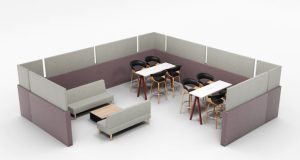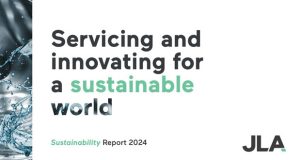By Basant Singhatwadia, Director of Customer Innovation & Strategy at Facilio Inc.
From seamless online and offline shopping integration to cutting-edge wayfinding tools and personalised shopping recommendations, technology has created a retail landscape where convenience, personalisation, and engagement thrive.
Shoppers now enjoy effortless transitions between digital and physical realms, resulting in a shopping experience that is both streamlined and captivating. This technological revolution has elevated customer satisfaction and set new standards for retail excellence.
While the front end dazzles with innovation, the backend operational and maintenance technologies often remain fragmented and decentralised. This scattered landscape profoundly impacts operational efficiency and dents sustainability efforts. It’s a gap that needs bridging for the industry to thrive in the ever-changing retail landscape.
This article aims to equip retailers of all sizes with the knowledge and tools to ensure that their back-end operations are as efficient, sustainable, and effective as their front-end experiences.
Stay on top of system availability with IoT-led remote monitoring
Many remote monitoring platforms are tied to specific hardware providers, limiting businesses to monitoring only the equipment supported by that provider. For example, you could have a remote monitoring platform built for refrigeration and HVAC devices.
It’s great to monitor those two categories, but it may not be enough if you ever want to monitor lighting or energy.
These controllers work well for their intended purpose, ensuring that each piece of equipment functions seamlessly. However, this fragmented ecosystem falls short of providing a holistic view of performance across all stores, depriving retailers of valuable insights for optimising operational efficiency, achieving energy savings, and maintaining compliance.
Moreover, these controllers lack the agility for dynamic cloud-based sequence or schedule changes, condition-based workflows, and comprehensive reporting capabilities.
The solution? A hardware-agnostic IoT software platform that seamlessly integrates with controllers and automation systems across all stores.
This IoT platform skillfully filters out irrelevant alarms, ensuring that only the most critical issues demand immediate attention. With precise issue triage and root-cause analysis, maintenance teams identify underlying problems swiftly and accurately.
Furthermore, this platform harmonises reporting across systems, encompassing refrigeration, HVAC, lighting, meter data, and more. This newfound flexibility empowers retailers to navigate the ever-evolving operational landscape, free from the constraints of a single hardware provider, and gain portfolio-level visibility and control.
Reducing alarm noise to improve efficiency
Equipment controllers often generate alarms at the slightest anomaly, overwhelming store employees with notifications, even though statistically, only 5-10% of these alarms need human attention.
IoT remote monitoring platforms add context to these alarms, liberating employees from non-essential distractions. They eliminate the need for costly call centers to manage excessive alarms while enhancing first-time issue resolution rates with root-cause analysis.
They handle the ingestion of millions of controller alarms daily at an enterprise level, contextualizing data by considering building and device attributes ensuring efficient alarm filtration.
Pairing your asset data with maintenance history, weather data, and location data attributes can significantly increase accuracy and give much-needed context to your maintenance team when addressing alarm issues.
Through IoT-based alarm management, retailers can transform their operations into streamlined environments that proactively address issues while minimising disruptions.
Close the monitoring loop with CMMS integration
Your team is crucial in executing your maintenance strategy and prolonging asset life. Streamlining software-to-person processes is essential for greater cost savings and value.
An efficient IoT solution should not merely identify anomalies but also enable real-time interaction with your maintenance team, empowering them to address issues promptly based on priority.
When selecting an IoT remote monitoring platform, retailers should seek solutions that:
- Support configurable workflows for different problem types and scenarios within the CMMS
- Provide specialised alerts to stakeholders based on problem type, including automated calls, SMS messages, and email notifications.
- Offer reminder functionality to ensure prompt follow-up action, preventing issues from lingering unresolved.
- Implement escalation processes for unresolved issues, meticulously documenting each process step.
A successful IoT platform serves as a bridge, connecting software and personnel, optimising maintenance strategies, and elevating asset management.
Get predictive insights for equipment management
Beyond data collection, IoT remote monitoring platforms empower retailers with data-driven insights. The platform should be able to acquire, normalise, and correlate data from multiple relevant sources to ensure data quality.
Next, with a configurable, rule-based engine should be able to run different types of data from across the portfolio, such as transactional, operational, calculated, conditional, and static, and simultaneously assess multiple impact types. It should be able to use benchmarking features to compare data trends within a site and across sites.
Finally, applying machine learning algorithms to these data sets enables you to set baselines tailored to the equipment’s make and model to identify from the point of commissioning it.
With such an IoT platform, you can get more from your data and replace preventive planned maintenance with just-in-time maintenance, saving you time, wrench, and person-hours.
Unlock savings with enterprise-level set-point control
An effective IoT solution empowers organisations to gain control over operational setpoints and schedules, leading to substantial savings.
Say a chain of supermarkets employs an IoT solution to control the setpoints of their refrigeration systems at an enterprise level. When store managers make temporary adjustments to setpoints, the IoT platform alerts the central management if the changes deviate from corporate standards.
This visibility helps the company save on energy costs by ensuring that setpoints return to standard after temporary deviations. Additionally, the platform allows for automatic adjustments during peak-demand hours, further optimising energy consumption and cost savings.
However, these opportunities often go untapped without enterprise-level setpoint and schedule control. A top-tier remote monitoring IoT platform provides insights into setpoints and schedules and allows for changes and automatic reversion.
Now envision this: The HVAC systems in your stores adjust in real time based on occupancy data.
Besides making dynamic set point changes for refrigeration and peak demand hour adjustments, the optimisation engine runs in the background 24/7 to save energy on HVAC and lighting based on real-time occupancy.
This functionality enables enterprises to capitalise on additional energy-saving scenarios, making it a crucial component of cost-effective energy management.
The road ahead: IoT-led monitoring, control, and maintenance workflows
As environmental responsibility becomes integral, those equipped with IoT-driven solutions are not just retailers but pioneers poised for success in a changing market where efficiency, sustainability, and competitiveness converge.
IoT-led remote monitoring, controls, and maintenance workflows offer a path forward, allowing retailers to bridge the gap between front-end innovation and back-end operations.
Retailers embracing this transformation can not only enhance customer experiences but also unlock substantial savings and pave the way for a greener, more competitive future in the retail landscape.





